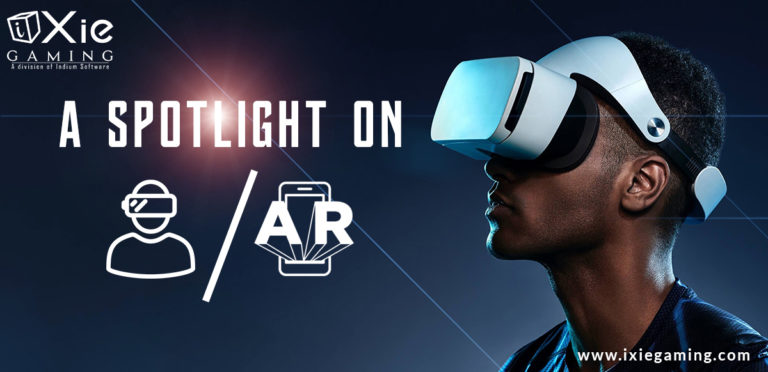Generative artificial intelligence (AI) has become a buzzword across different sectors, including gaming. This growing use of generative AI is largely attributed to its advanced capabilities, including the ability to create unique content. Generative AI has experienced increasing usage in game design as it accelerates and streamlines different aspects of game development.
Generative AI in game design refers to the use of AI techniques, particularly generative models, to develop and improve different video game aspects. These models can produce game content, including music, textures, characters, mechanics, and even levels. As a result, they allow for a more personalized and dynamic gaming experience. But why is there a growing use of generative AI in game design? How is this technology being used in game development? And what are some challenges faced when using this technology in gaming? Join us as we explore these and more about generative AI in game design.
Why is there a Growing Use of Generative AI in Game Design?
Generative AI has significant potential in game design. This has resulted in the growing use of AI technology in game development. Here are some benefits of using generative AI in game design:
Saves Resources and Time
Generative AI models significantly ease the work of developers. For instance, they automate the initially time-consuming game design processes, such as producing content. This is essential in today’s fast-paced world, where time-to-market is crucial to the success of a game due to competition. By automating such processes, developers save time and focus on other strategic elements of game design that cannot be automated.
Increases Game Performance
Generative AI can automatically change game settings to ensure optimal performance across different platforms and devices. This reduces the probability of breakdowns and other technical difficulties by analyzing software and hardware requirements. Therefore, this technology guarantees that games run seamlessly across diverse platforms and devices.
Improves Gameplay
Every developer aims to deliver a game that offers seamless gameplay. Generative AI helps achieve this goal by enabling developers to create smarter and more nuanced opponents. As a result, it improves the overall game mechanics and makes the game more challenging yet exciting for players.
Offers More Personalization
The concept of personalization in gaming has become popular in gaming. This concept enables players to enjoy an equally enticing gaming experience, regardless of the level of experience. Generative AI is a valuable technology when it comes to developing personalized player experiences. This technology can create specific game experiences that excite different players by assessing player inclinations and behavior. As a result, it enhances player retention and interest, eventually leading to more profitable games.
Enhances Creativity
Coming up with new game design ideas can be challenging. However, generative AI allows developers to experiment with new game design ideas and concepts. They can use generative AI models to produce new ideas that can significantly transform the gaming world. As a result, these models enable them to create more innovative games.
Also Read: How Generative AI is Changing the Gaming Landscape
Applications of Generative AI in Game Design
Here are some ways in which generative AI is used in game design:
1. Object and Character Design
A game is made of objects and characters. Initially, these components were built entirely by developers. They took a lot of time to create as they involved numerous repetitive tasks. However, generative AI has changed this approach entirely. This technology is being used to develop unique and diverse objects, textures, and characters for games. But how does it achieve this goal?
Well, the generative AI models are trained on existing game assets. This enables developers to use them to create new assets that match the game’s style and aesthetic. Therefore, it helps them create more immersive game worlds while reducing the effort and time required to manually develop game assets.
2. Procedural Content Generation
As the name suggests, procedural content generation (PCG) is a game design technique used to develop game content algorithmically instead of manually. Generative AI improves PCG by learning structures and patterns from existing game content and producing new content that follows these patterns. This results in more engaging and diverse game worlds and reduces development costs and time.

3. Sound and Music Design
Games often contain sounds and music that complement specific actions. Manually creating these sounds and integrating music can be time-consuming. But that is no longer the case, thanks to generative AI. This technology can be used to create adaptive and dynamic soundscapes and music for games. For instance, generative AI models can be trained on existing game sound effects and music, enabling developers to create new sounds and compositions that fit the game’s style and atmosphere.
4. Adaptive Game Mechanics
Game mechanics are crucial in modern games. However, these mechanics were initially built and configured manually, which consumed a lot of time. However, generative AI has changed how developers create adaptive game mechanics that respond to player preferences and actions. They can use generative AI models to analyze players’ preferences and behavior and alter game mechanics and difficulty levels, among other game aspects. This paves the way for a more engaging and personalized gaming experience.
Challenges of Generative AI in Game Design
Although generative AI can transform game designs, several challenges must be addressed, including the following:
- Computational resources. Smaller development teams and those with limited resources may struggle to meet the computational demands required to train generative AI models.
- Quality control. Ensuring the quality of the AI-generated content is up to the standards can be challenging. This is because generative AI models may generate content that is incompatible or inconsistent with the game’s design.
- Ethical considerations. Generative AI use in game design raises ethical concerns about the potential for AI-generated game content to replace human labor and creativity. Also, there’s a possibility that AI-generated content may perpetuate biases that may be present in the training data.

Final Thoughts
The increasing use of generative AI in game design has unlocked new possibilities. From accelerating the game design process and improving gameplay to enhancing creativity and promoting personalization, generative AI has revolutionized how developers create games. This technology is being used throughout the game design process, from object and character design to adaptive game mechanics, resulting in more engaging and personalized gaming experiences. However, developers must address various challenges associated with the use of this technology, including ethical concerns and quality control, to get the most value out of its application.
Looking for a game QA partner to address your game testing needs? iXie has got you covered. Contact us for more information on how we can help you achieve a more seamless gaming experience.
Frequently Asked Questions:
Generative AI utilizes machine learning techniques, such as neural networks, to analyze and learn patterns from existing game content. Once trained, these models can generate new, unique content based on the learned patterns. In game design, this can lead to the creation of diverse and dynamic gaming experiences.
Some of the benefits of using Generative AI in Game Design are as follows:
Saves resources and time
Increases game performance
Improves Gameplay
Offers more personalization
Enhances creativity
Here are some ways in which generative AI is used in game design:
Object and Character Design
Procedural Content Generation
Sound and Music Design
Adaptive Game Mechanics
Several challenges of using generative AI in game design include:
Computational resources
Quality control
Ethical considerations






